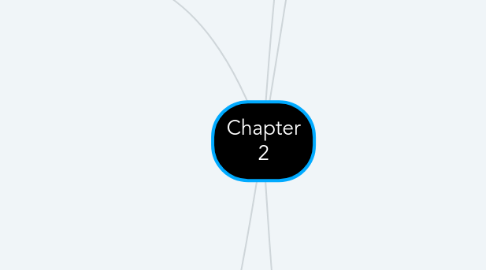
1. Cultural and Linguistic Minorities
1.1. Funds of Knowledge
1.1.1. Cultural practices and knowledge that people use to survive and are used to build on what students already know
1.1.2. Language as a resource
1.1.3. Acknowledges home language and culture as valuable and relevant to the classroom
1.2. Supports
1.2.1. Sensory- use manipulatives, realia, images, physical movement, models and figures, videos and films, magazines/newspapers
1.2.2. Graphic- Charts, graphs, tables, graphic organizers, timelines and number lines, infographics, vocabulary supports
1.2.3. Interactive- students work together in pairs or small groups, during a whole class, use structured dialogue. During projects, students should all have assigned roles. Group students with their language learning peers to help each other out
1.3. Engaging EL's and their Families
1.3.1. Develop trust and provide reassurance. Recognize and respect the ways the family supports their child's development
1.3.2. Home- school partnerships
1.3.3. Empower the parents and families
1.3.4. Need communication
1.4. Assimilation
1.4.1. Losing native language and culture and replacing it with american culture
2. Racial Minorities
2.1. Important Terms to remember
2.1.1. Ethnicity-Commonality transmitted by the family over generations. "It involves conscious and unconscious processes that fulfill a deep psychological need for identity and historical continuity"
2.1.2. Race-Based on physical characteristics such as skin tone, facial structure and origin. It is not meant to be used to describe people beyond physical traits.
2.1.3. Culture- Unique experiences and history of an ethnic group. It is learned, characteristic of groups, and sets rules for behavior.
2.1.4. Equity- Groups at a disadvantage are given supports to help "level the playing field" with people with fewer obstacles
2.1.5. Equality- everyone receives the same supports, regardless of need.
2.2. White Privilege
2.2.1. White people have fewer obstacles to overcome in life than their black or brown counterpart
2.2.2. Has a role in "reverse racism"
2.2.3. Pretending to not see color is counterproductive
2.3. Bias
2.3.1. Favoring one group over another
2.3.2. Includes race, sex, SES, cultural identity. sexual orientation, language groups, even age
2.4. Social Justice Issues
2.4.1. Issues within our society that impact a specific minority group
2.4.2. Police brutality, racial profiling, right to marriage, pay gap, achievement gap, etc.
3. Historically Marginalized Groups
3.1. Groups who have been kept on the edge of society
3.2. Denied full participation in mainstream cultural, social, political, and economic activities.
3.3. Inequities
3.3.1. Denied fair and equal housing, healthcare, educational opportunities, access to childcare, employment
3.4. Challenges
3.4.1. Mental health, political exclusion, discriminatory laws, abuse of laws/justice, poverty, crisis recovery
3.5. Groups
3.5.1. Racial minorities (BIPOC), Cultural minorities, Women, Persons living in poverty, The Homeless, Prisoners/Incarcerated, Persons with hearing, visual, and physical disabilities, Refugees/immigrants/migrants, Persons with mental health issues Persons with cognitive impairments, Religious groups, Persons dealing with substance abuse, Veterans, Senior citizens
4. Low SES Families
4.1. Negative Impacts
4.1.1. Difficulties with peers
4.1.2. School problems
4.1.3. Low self-esteem
4.1.4. Violent neighborhoods
4.2. Prejudice against families utilizing government resources
4.2.1. Must move from welfare to work on their own (Pull themselves up by their bootstraps)
4.2.2. Racist and sexist elements to this view
4.3. Parent(s) may not be as involved in the classroom.
4.3.1. Work hours
4.3.2. Lack of transportation
4.3.3. Differing cultural views of role of parent involvement in the classroom
4.3.4. Language barriers
4.3.5. Lack of knowledge on subject matter
4.4. Risk for poverty highest in early childhood
4.5. TANF
4.5.1. Temporary Assistance for Needy Families
4.5.2. 5 year limit to welfare
4.5.3. Need a job after 2 years of receiving checks
4.5.4. Jobs alone do not prevent poverty
4.6. SNAP
4.6.1. Supplemental Nutrition Assistance Program
4.6.2. Only used for certain food items
4.6.2.1. Does not include hot foods, pet foods; soaps, paper products, and household supplies; grooming items, toothpaste, and cosmetics Alcoholic beverages and tobacco, Vitamins and medicines
4.6.3. Use EBT card at approved stores
4.7. Educational Supports
4.7.1. Encouragement to be lifelong learners
4.7.2. Providing classroom materials subtly
4.7.3. Enhance family involvement and reach out early and often
4.7.4. Incorporate arts, music and movement into instruction
5. Diverse Family Structures
5.1. LGBTQ+ families
5.1.1. Children raised by gay or lesbian families are just as likely to be successful as children raised by a heterosexual couple.
5.1.2. Educate children on inclusive terminology in the classroom
5.1.3. Be an ally
5.1.4. Support students who come out to you
5.1.5. Respond to anti-LGBTQ actions and behaviors
5.1.6. Support student clubs
5.2. Gender Role Identity
5.2.1. Have a gender neutral classroom where children are free to express themselves without feeling the need to conform to the expectations of their gender
5.3. Single parent homes
5.3.1. Second most common living arrangement for children
5.3.2. Single mothers have a lower income than single fathers; women in minorities make even less
5.3.3. Most single parent homes are mother headed
5.4. Religiosity
5.4.1. degree of emphasis families place on religion in their lives
5.4.2. religious belief or practice may affect a child’s behavior

